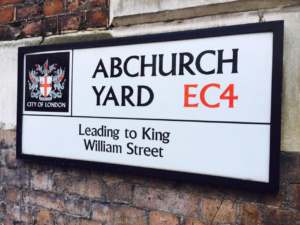How will Tier 1 FX liquidity look if the UK stays in or leaves the EU? Op Ed
I take a look at the capitalization of Britain’s Tier 1 FX dealers, and how this stacks up against continental counterparts.

“Should I stay or should I go?” sang Mick Jones famously in 1982. Even that was 11 years after Britain became part of the European Economic Area (EEA), often referred to at the time as the Common Market.
Although Mick Jones’ lyrics are a distant memory today even among the most seasoned music enthusiasts (myself included), Britain’s stepping into what is now the European Union some 43 years ago is, as far as electronic trading is concerned, akin to taking a look back to the monolithic period.
In 1973, there was no electronic trading, institutional or retail. Indeed, the banks were traditional and local, and offered basic services to individual customers at a time when post-war rationing was not such a long time previous.
Europe was a different continent, considered exotic by those who ventured across the channel to France to be greeted by chic fashion and idiosyncratic continental vehicles containing sophisticated Parisians en route to the gite for the summer, that is if the British Leyland vehicle that transported them would make it that far without electrical or mechanical histrionics that symbolized the industrial tensions of early 1970s British industry.
In the 1970s, Britain was stoic, hard working and gritty, whereas continental Europe was fine wines and siestas.
The same is absolutely not the case today.
Britain, and in particular London, has risen in stature to become a plate glass, economic, technological and financial powerhouse, home to 46% of all global interbank FX order flow which is transacted by vast institutions such as Barclays on its proprietary BARX platform, HSBC, as well as transatlantic giants such as JPMorgan and Citigroup, the world’s largest handler of Tier 1 FX liquidity, which conducts it all from London’s Canary Wharf.
Back in 1973, Canary Wharf did not exist. Tower Hamlets was a crumbling, semi-deserted relic of the concrete, brutalist post-war period, steeped in poverty, with legacy industries such as tobacco import, and warehouses that once stockpiled coal, steel and molasses left empty.
Today, the world’s largest financial institutions dominate the skyline and just two miles west, in the City of London, colloquially known as the Square Mile, the heart of the institutional FX world beats with a healthier rhythm than ever before.
No longer is Central London charmingly known as “the smoke”, but instead has become the leading world city for FinTech innovation, alongside the strength of the massive electronic trading infrastructure that operates from the City, giving rise to new names such as “Silicon Roundabout” where tomorrow’s financial services environment is being developed by urbane Millennials.
On this basis, Britain and continental Europe continue to remain very different environments, a matter that is very present if looking at the magnitude of Britain’s output and fiscal strength compared to that of continental Europe’s EU member states.
Mainland Europe today is not part of the global financial sphere at all. New York and Chicago dominate the listed derivatives sector, with massive futures volumes being conducted by proprietary trading shops on the largest venues in the world such as ICE and CME Group, both leaders in technological innovation and financial markets infrastructure.
Singapore and Hong Kong provide the banking and trading centers for the entire Asia Pacific region, and London powers the entire world in terms of global electronic order flow.
The chances are that if you are a broker, and you are taking aggregated liquidity from a liquidity provider that has a direct relationship with a prime brokerage, that prime brokerage is likely to be in London, and most certainly the Tier 1 banks that provide the liquidity are also.
Germany self-proclaims economic might, and indeed it is one of the stronger nations in the European Union, but its largest financial institution, Deutsche Bank, conducts all of its FX order flow from Canary Wharf in London.
What will happen next?
Looking at the capital and leverage ratios for Britain’s banks is most certainly a good starting point.
If Britain becomes an independent sovereign nation in two days time, these are the figures that will matter when looking at how banks measure their risk and how well they are capitalized.
There will be no European Central Bank debt burden, but there will also be no bailouts if things go awry. My calculation is that there will not be need for bailouts in Britain for the forseeable future based on how well capitalized the banks are and the sheer size of their commission business.
Banks to consider in terms of capitalization and leverage are:
- Barclays
- Co-operative Bank
- HSBC
- Lloyds Banking Group
- Nationwide
- Royal Bank of Scotland
- Santander UK
- Standard Chartered
Whilst only some of these handle FX order flow, these are the British banks that come under rules set out by Britain’s banking regulator. Others operate under European banking rules, which are passportable as long as Britain is an EU member state.
As of 2014, Banks have been expected to meet a 7% common equity Tier 1 (CET1) capital ratio on the definition of capital. Firms are also be expected to meet a 3% end-point Tier 1 leverage ratio.
For the avoidance of doubt, compliant additional Tier 1 (AT1) instruments may be included in the cash recovery rate (CRR) numerator, and the Basel 2014 exposure measure should be used for the denominator. The leverage ratio should be calculated on an end-of-quarter basis.
Since 2013, Britain’s banks have been overseen by the Prudential Regulatory Authority, which effectively is the regulatory arm of the Bank of England, rather than the FCA which supervises non-bank entities.
The Prudential Regulatory Authority will review the definition after changes to the CRR definition and the leverage ratio review by the Financial Policy Committee and expects firms to meet these standards at the level of the consolidated group from 1 July 2014 except where the PRA has agreed a plan with the firm to meet the standards over a longer time frame. The PRA expects firms to meet the standards in this supervisory statement in addition to the requirements imposed on them by PRA rules and CRD IV.
British banks are ship shape, European banks flounder
The interesting point here is that the European Banking Authority (EBA) emulated Britain’s structure in 2014, generating a Basel III report which stated that a 7% capital ratio should be maintained, however that is where the similarities end.
Some banks in Europe fell short of the requirements, with amounts of shortfalls as represented by the difference between the current and full-implementation level of capital that have been continuously shrinking since mid-2011, and by the middle of last year were at their lowest level (EUR 1 billion compared with a CET1 requirement of 7%) as of the end of June 15 2015.
For the first time, the monitoring exercise analyses the leverage ratio, as defined in EU legislation, in conjunction with the risk-based capital ratio analysis. The analysis indicates that the leverage ratio is indeed a binding regulatory constraint for a significant number of institutions in the sample.
With regard to the capital ratio, the average ratio as of the end of June 2015 was 121.2% for Group 1 banks and 156.7% for Group 2 banks. Four fifths of the participating banks exhibit a capital ratio above 100%, while nine out ten banks have an LCR ratio above the 70% minimum requirement (which is the binding minimum of the EU LCR from January 2016).
Furthermore, FinanceFeeds research shows that there has been an increase in banks’ capital ratio over time, which can be attributed to structural adjustments (both an increase in high quality liquid assets (HQLA) and a decrease of net outflows), as well as to the recalibration of the capital ratio framework as published in January 2013.
With respect to the net stable funding ratio (NSFR), Group 1 and Group 2 banks show an average ratio of 104% and 111%, respectively, with an overall shortfall in stable funding of EUR 341 billion. Around three quarters of participating banks already meet the minimum NSFR requirement of 100%. Compared with previous periods, there has been a continuous increase in banks’ NSFR, which is mainly driven by the increasing amount of available stable funding (ASF) for both groups.
Britain’s Tier 1 banks do not have anything like this difficulty and the gap will likely widen significantly if Britain leaves the European Union because FX firms and prime brokerages will continue their relationship with British Tier 1 banks, including European banks such as Credit Suisse and Deutsche Bank that conduct all of their FX business from London despite being European banks.
Deutsche Bank and Credit Suisse have both been the subject of massive losses during the course of last year, and Deutsche Bank’s proposed merger with London Stock Exchange has been an expensive wrangling match over who acquires what assets, and how, and from where it will be run.
Recently, a number of very well capitalized, high quality FX brokerages have begun establishing their own prime brokerage divisions, many of whom are based in London, ADS Securities and AFX Group being very recent examples and FxPro just two years prior. These will remain very strong and continue to further their businesses, with broker customers having a very solid capital base and strong banking environment behind them whether Britain leaves or remains in the EU.
Among other well recognized prime brokerages are Saxo Bank which operates under its own banking license
which has its own Tier 1 aggregated liquidity feeds from Deutsche Bank, Citi, Barclays (BARX platform), Morgan Stanley, JPMorgan, Nomura, Credit Suisse, UBS, BNP Paribas, HSBC, RBS, Commerzbank, ANZ, RBC and State Street, whilst non-bank liquidity is sourced from GSA, Citadel, Virtu and selected other providers, with ECN connectivity via EBS, Currenex, FXAll, Hotspot, Bloomberg Tradebook FX, Fastmatch, Gain GTX, LMAX.
Working with firms such as Saxo Bank is a very stable and well organized method of weathering potential changes in the geopolitical system because of these individual relationships.
Two days is all that remains before the British electorate casts its vote, the vast majority of those deciding the future of the nation not being part of the financial sector at all.
One thing is for sure, however, that being that Britain and its world-leading electronic trading center will continue to dominate, regardless of any cross-border changes.
Photograph copyright FinanceFeeds









